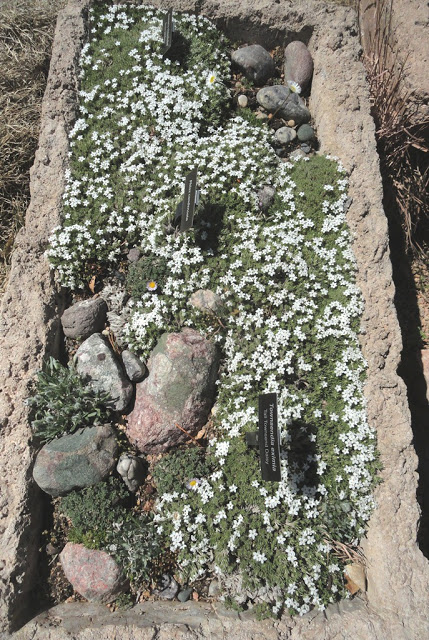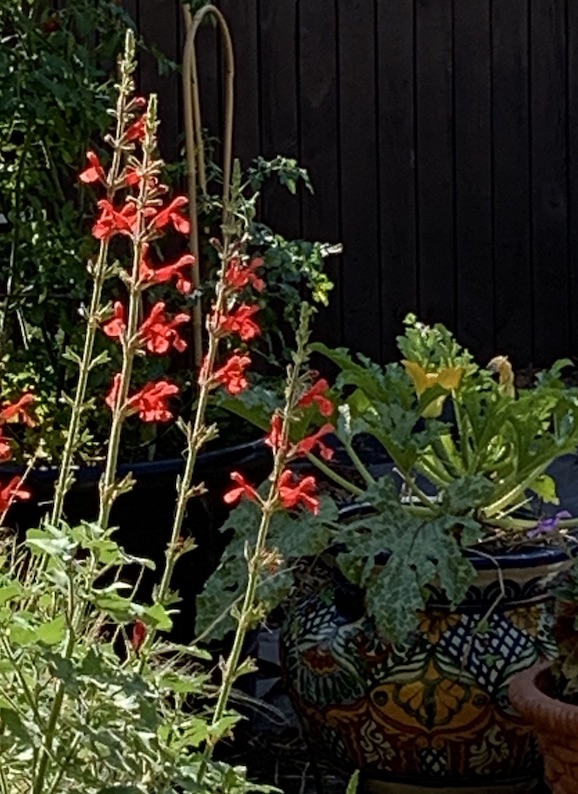A few years ago it was all about Millennials and how they travel to collect experiences, selecting destinations because of the stories they can later tell, and prefer to acquire skills – like gardening — through hands-on learning. Like that’s something new? But if that’s the case, I’ve been a Millennial all my adult (Boomer) life, “collecting” as many gardens and landscapes as I could to feed my story-telling career, and learning from doing – and making mistakes – in my garden and the ones I’ve worked in, including the Ladybird Johnson Wildflower Center when I first arrived from England. In my travels and research I’ve learned more about, and met, a few other intrepid females who were on a similar quest and discovered that the American Southwest has long been especially attractive to this subset of the plant-loving and collecting population. Particularly if they had a car…or, like Isabella Bird, who in 1873, was the head of the pack, traversing the Rocky Mountains on a sturdy horse; I am full of respect for these women and the many others who roamed the West in rickety motor vehicles at a time when roads were little more than dirt tracks and tires more like birthday balloons.
I wrote last year about two of these ladies: Kathleen Marriage, who arrived in the USA in 1912 with her sister, Molly — two Irish women striking out to make a new life. They drove in a Hupmobile, the family story goes, from the East coast to a Kansas ranch, near the Colorado border. Soon after Kathleen married, they all settled in Colorado Springs and the sisters started a plant nursery, ‘Upton Gardens’. Although Mollie was identified in the ship’s passenger list as “landscaper”, and Kathleen as a “teacher”, it was the latter who became recognized for bringing the flora of the upper regions of Pikes Peak to international attention, seeking out small treasures which she introduced via journal articles for the International Rock Garden Society. At the 1951 Rock Garden Plant Conference in London, she gave a talk illustrated with color slides of Colorado alpines, which were described as “some of the finest color photographs ever displayed.” Sadly, her slide collection was lost in a fire at her son’s home, where she’d been living in retirement. Equally saddening are the small, tired remnants of the parks and gardens Kathleen worked so hard to establish in the city.

Sally Walker, an English woman who fetched up in Tucson AZ in the early 1960s, her horticultural expertise firmly grounded in the soil of England’s renowned Waterperry College, has contributed some of the best plants to our gardens by her adventuring and seed-collecting throughout the southwest. My particular plant of choice is penstemon…can’t get enough of them, and P. cardinalis is a vivid red stunner introduced by Sally; it’s a cold-hardy hummingbird magnet from the mountains of southern New Mexico. Her nursery, Southwestern Native Seeds, issued catalogues that were the stuff dreams are made of. Quoting from the 1993-94 issue:
“This year was a landmark for us as we finally “reached the Pacific” and were able to include the lower Coast Range of California, which is farther than many of the areas we’ve been going to on a regular basis… . Here the plants are totally different… as are the mountains they’re found in. Many of the penstemons, such as P. spectabilis and P. clevelandii are nothing short of spectacular. Another new areas that we were able to visit this year, which is about the same distance, was the Sierra Madre of Chihuahua.”

One of the travelers down the garden path of the American West that I’m lucky enough to call friend is Betsy Clebsch. Before we met, she was described to me as being “unstoppable”, making annual forays into the desert wilds of the southwest and interior Mexico in search of salvias, which is admirable, but even more so, is that her footgear, it was said, was typically rubber flipflops. “Indomitable” I would say. Notwithstanding, and sometimes underwhelming billed as an “amateur” botanist, Betsy has brought to our gardens an enormous variety of colorful, vivacious sage plants. Standing one early morning in her sage garden overlooking the fog blanketed hills above La Jolla, California, the hummingbirds were swarming, the breeze carried the resinous scent of myriad salvias—and I had a new story to tell and plant group to collect.

Betsy explained to me years ago, “there’s a salvia for every occasion and every garden” since they grow in a wide variety of habitats, deer distain them and they are among the least thirsty of plants. Betsy’s particular fondness was for blue-flowered sorts. But red is my eyecatcher, and Salvia darcyi is Queen of the Garden (‘though I may have to acquire blue-flowered S. clevelandii ‘Betsy Clebsch’, because of the story I can tell). It makes a huge clump of stiff stems up to five feet tall, covered in heart shaped sticky leaves and topped by candles of vivid red flowers all summer. It’s hardy for me, in Zone 5 at 6700 ft. I first grew it in Texas where I got it from Yucca Do nursery who collected it in Mexico; Betsy admired it, and Yucca Do, and their botanizing travels in Mexico that she went on several times, as did I.
So, in this time when travel is discouraged and collecting impeded, it’s all too necessary to fall back on memories and our gardens, where the stories we have to tell are written, and we can exercise what we’ve learned through experience.
©Ethne Clarke, 2020
There’s a good deal to be learned at the Ladybird Johnson Wildflower Center: https://www.wildflower.org/
Isabella Bird’s book, A Lady’s Life in the Rocky Mountains, about her travel is Rocky is a classic of the genre: https://en.wikipedia.org/wiki/A_Lady%27s_Life_in_the_Rocky_Mountains
There are few places that Denver Botanic Garden’s Director of Outreach, Panayoti Kelaidis doesn’t know about rock gardens, Rocky Mountain gardens and much, much else. Find out at his illuminating Prairiebreak blog: http://prairiebreak.blogspot.com/p/phlox.html
Kathleen Marriage was eulogized in the Bulletin of the American Rock Garden Society, Vol 16 #3, July 1958.
A lovely tribute to Sally Walker, written by David Salman can be read on the High Country garden website: https://www.highcountrygardens.com/a-tibute-to-sally-walker-founder-of-southwestern-native-seeds
Find Betsy’s go-to guide, The New Book of Salvias: Sages for Every Garden as well as her earlier books on the genus Salvia: https://www.amazon.com/New-Book-Salvias-Sages-Garden/dp/1604695102/ref=sr_1_1?ie=UTF8&qid=1510434146&sr=8-1&keywords=betsy+clebsch


